The Great "Desaturation" of Medieval Fashion
Sometime in the last 50 years, all the color was drained from medieval fashion in film, and you might not have noticed.
To celebrate the launch of The Medievalist, our first print issue, we’re publishing a selection of stories from the magazine, plus a few newsletter-only additions, for all of you wenches to enjoy. Today, pop culture writer & creator of ModernGurlz Tessa Rahaman explores just how the Middle Ages became known for drab, gray, and frankly, “dirty” aesthetics…and how that couldn’t be further from the truth. The Medievalist is available for purchase online, now!
When did Timothée Chalamet in The King, with his bowl cut, grey wardrobe, and penchant for rolling around in the mud, become the poster child for style in the Middle Ages? Sometime in the last 50 years, all the color, pomp, and play was drained from medieval fashion in film. The irony is that this drab aesthetic is as much a Medieval fantasy as fire-breathing dragons, magical sorcerers, and immortal unicorns.
During the Middle Ages, wool was the most common textile throughout Europe, and in its undyed form it came in shades of beige, grey, and brown. But even back then, people cared about their appearance. “There’s this idea that fashion has only existed for one social class, but people have wanted to express themselves through clothing for almost as long as we’ve been wearing clothing,” says fashion historian Cora Harrington. “Medieval peasants may not have had access to all the luxurious velvets and silks worn by the upper class, but they still would have used whatever local textiles and dyes they did have to appear as fashionable as they could.”
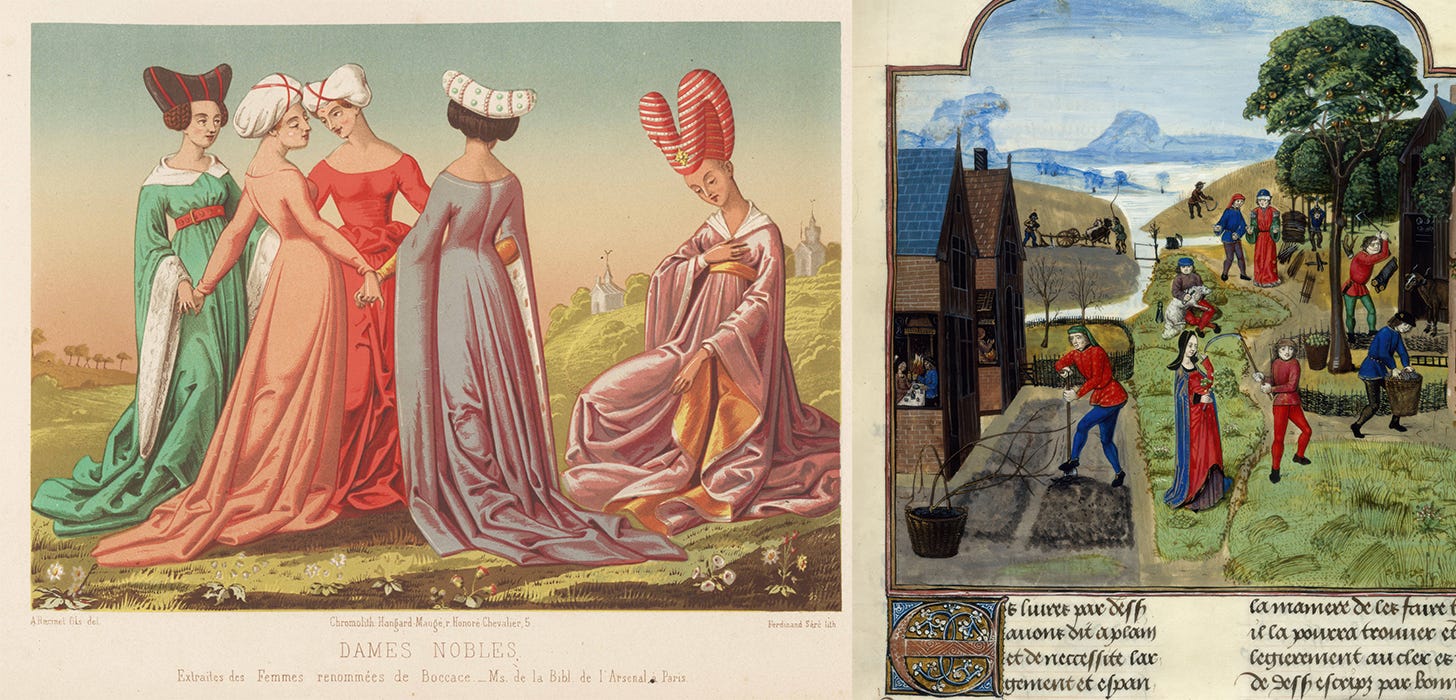
While they didn’t have as wide a range of dyes as we do today, Mother Nature still provided, with red, orange, yellow, green, and blue being used as popular options for clothing at the time. The more saturated these dyes were, the wealthier you were, and in existing Medieval artwork, you can see how commonplace it was for nobles to wear garments made up of multiple vibrant colors. We can still see a divide when it comes to the clothing of different economic classes to this day, but in the Middle Ages it was even more apparent, with nobles adorning themselves in garments that featured intricate embroidery, jeweled embellishments, and even cloth woven out of literal gold.
While there were differences across countries, centuries, and classes, there are prevailing silhouettes that have come to define the Medieval period. “Women would wear a kirtle — a straight, floor-length dress with a round neck and long sleeves,” says dress and design historian, Vicky Haddock, “And for men, they’d wear tunics, doublets, and hose.”
In modern times, women tend to be associated with bolder fashion choices than men, but during the Middle Ages, societal norms made it the opposite. Men of noble backgrounds were expected to dress ostentatiously as a way of highlighting their king’s wealth and means, but this sort of colorful clothing isn’t really considered “attractive” to audiences of today. As a result, instead of patterned hosiery and ornate surcoats, modern male characters have a habit of sporting leather pants and quilted manteau, making them look more like H&M models than Medieval lords. (Case in point: 2017’s King Arthur: Legend of the Sword, starring a brooding Charlie Hunnam.)
Modern beauty standards have impacted women’s fashion in Medieval films as well, particularly with regard to headdresses. Because of the influence of medieval Christianity throughout Europe, it was considered inappropriate for a married woman to show her hair in public, which led to a variety of headdresses emerging throughout the period, from the more simple wimple to the height-defying hennin. While I personally think they look fabulous, (I mean, have you seen Faye Dunaway’s escoffion in The Story of Joan of Arc?), Hollywood has a tendency to avoid them. As Haddock says, “Because we’re not used to seeing people wear hats in general, these sorts of large headdresses can be off-putting, so movies ignore that and go for flowing hair. It appears more natural, so people will believe it.”
Since the inception of the film industry over a century ago, the Middle Ages have served as a source of inspiration, with The Adventures of Robin Hood in 1938 being one of the genre's earliest successes, featuring bright and playful costumes. Its popularity subsequently set the standard for films set in the Medieval Era, and in the following decades Ivanhoe, The Court Jester, and Henry V adopted similar looks, consisting of colorful houppelandes (a tunic-like garment with flared sleeves), shining armor, eye-catching tights, and jewel-encrusted weapons.
At the time, film was a lot more over-the-top than it is now, as evidenced by the phony Transatlantic accents, giant set pieces, bold Technicolor, and frequent musical numbers. The costuming maintained their playful aesthetics well into the 70s and 80s, with medieval settings incorporating distinctly ‘80s additions like giant hair, fishnet kirtles, and spandex leotards (Excalibur, Ivanhoe, and The Princess Bride).
However, the grungy ‘90s ushered in the grittier representations of the Middle Ages, with films like The 13th Warrior, Dragonheart, and Robin Hood solidifying the aesthetic as the new normal. By rooting these films in a version of the past that audiences could more easily accept, and contrast with their current lives, the more absurd aspects of their premise could be excused. Obviously, these movies had their fair share of historical inaccuracies (e.g., Mel Gibson’s kilt in Braveheart), but they were interpreted as being more “realistic” than Medieval movies of the past due to the absence of glitz and glamor. This led to an entire generation believing that medieval peasants never bathed, ate nothing but gruel, and wore garments akin to potato sacks. But, as Haddock says, “The myth that Medieval people didn’t bathe or didn’t wash their clothes just isn’t true. The same as now, if you walked around covered in mud, people were going to look down on you, so you would try to keep clean for appearance’s sake.”
When the rare film did take a more creative approach to the Medieval Era, deviating from this filthy association, they were often lambasted for being too ahistorical. Take for instance A Knight’s Tale — while Jocelyn’s black-and-white hat might look like it was pulled from Dior’s FW 2000 runway, costume designer Caroline Harris actually based it on real 15th-century headwear. This phenomenon was coined “The Tiffany Effect” by author Nicola Cornick, as a reference to a historical fact seeming anachronistic to modern audiences, (like the name Tiffany, which has actually been in use since the 1600s).
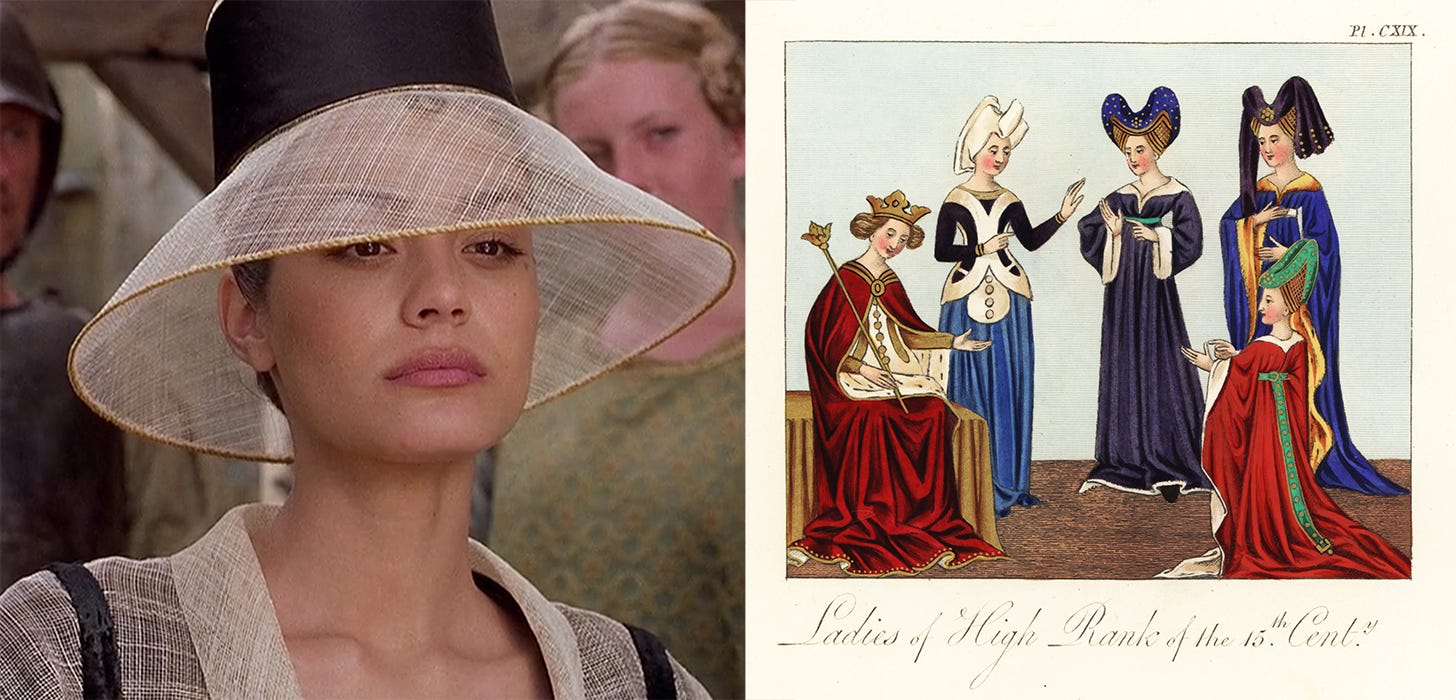
Over the last decade, there has been a major push for films to move in a more realistic direction, in large part because audiences are no longer suspending their disbelief long enough to accept the kind of fallacies that have historically gone hand-in-hand with film. With the internet giving anyone and everyone a place to voice their thoughts, these cynical critiques have completely changed the way that Hollywood goes about making movies. As former Paramount Pictures CEO Barry Diller said in an interview with The Hollywood Reporter, “It’s different. Everyone is more cautious and conformist now…The rough edges have been sanded off. We’ve gone from a town to a spreadsheet. And obviously that can’t help but impact the creative output as well.”
Although movies like The Last Duel and Outlaw King attempt to position themselves as historically accurate, their austerity is actually a pretty big deviation from reality. Sure, with most of these movies having darker themes, the muted visuals make sense from a character and world-building standpoint, but it’s unfortunate that they’ve resulted in so many misunderstandings about medieval fashions.
Instead of churning out this faux-realistic grit over and over again, I’d love to see Hollywood explore aspects of the time period that were more modern than people would suspect. They don’t actually have to be covered in dirt all the time. Give me a harlequin hennin. A pair of poulaines that look eerily similar to an Adidas Samba. Or a headdress covered in baby blue bows. And I will continue to repeat my refrain: Make the Middle Ages Colorful Again.
Tessa Rahaman is best known as the mind behind ModernGurlz, a digital media organization dedicated to all things pop culture. She’s always on the hunt for something new to obsess over and will happily talk your ear off about food, fashion, and film.



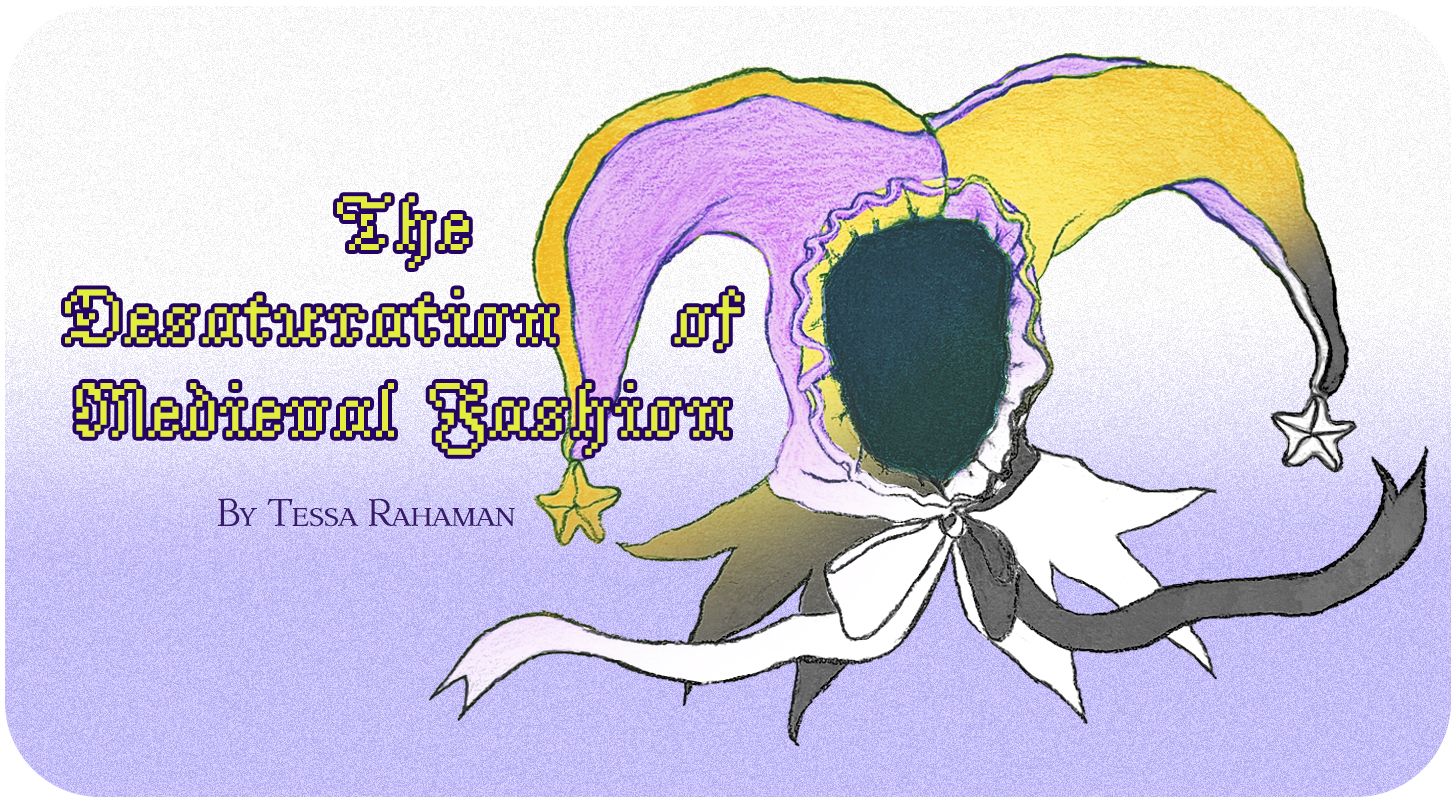
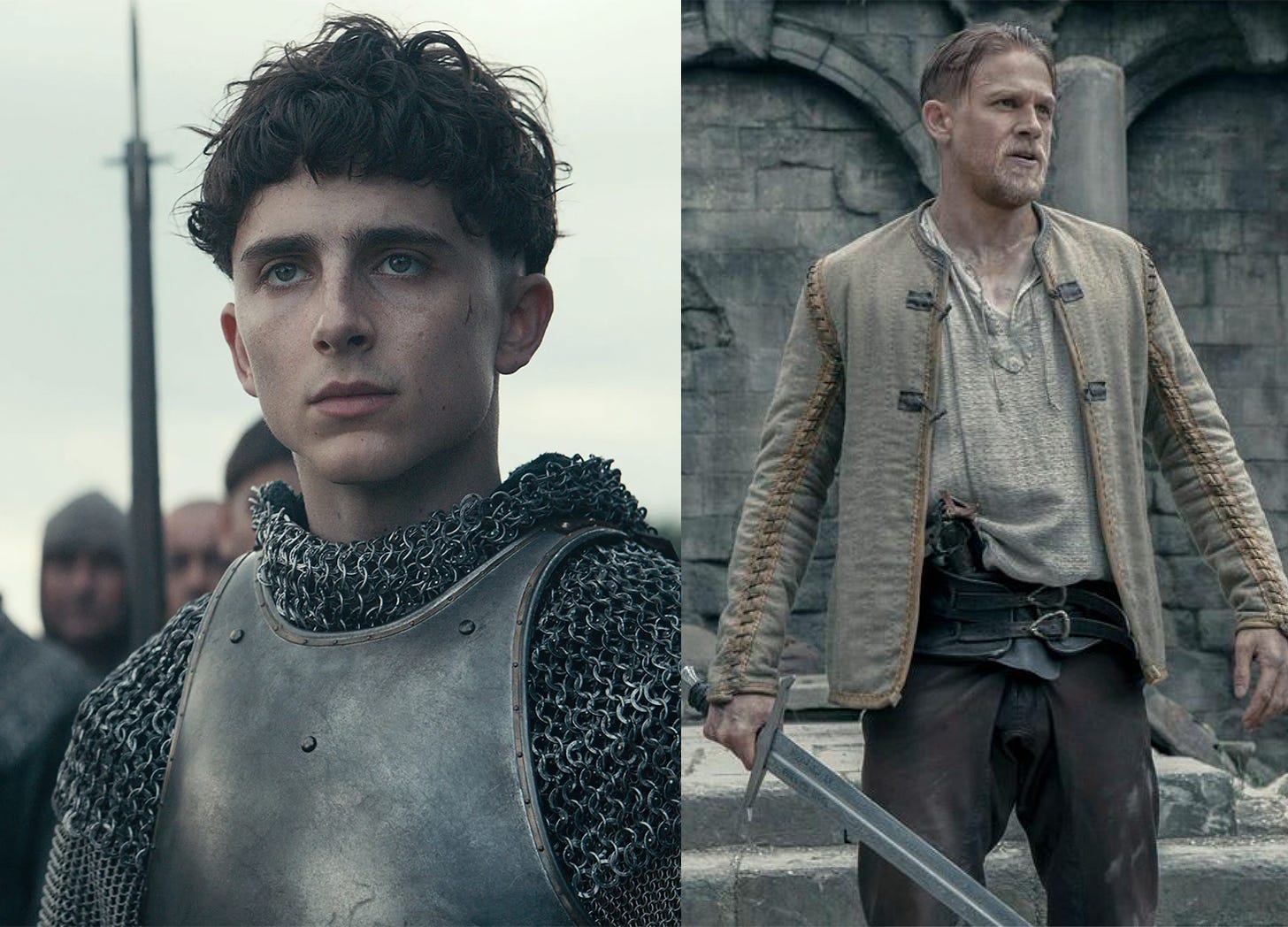
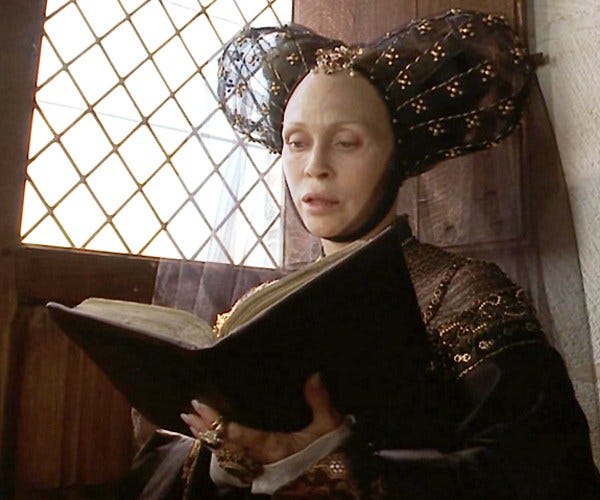
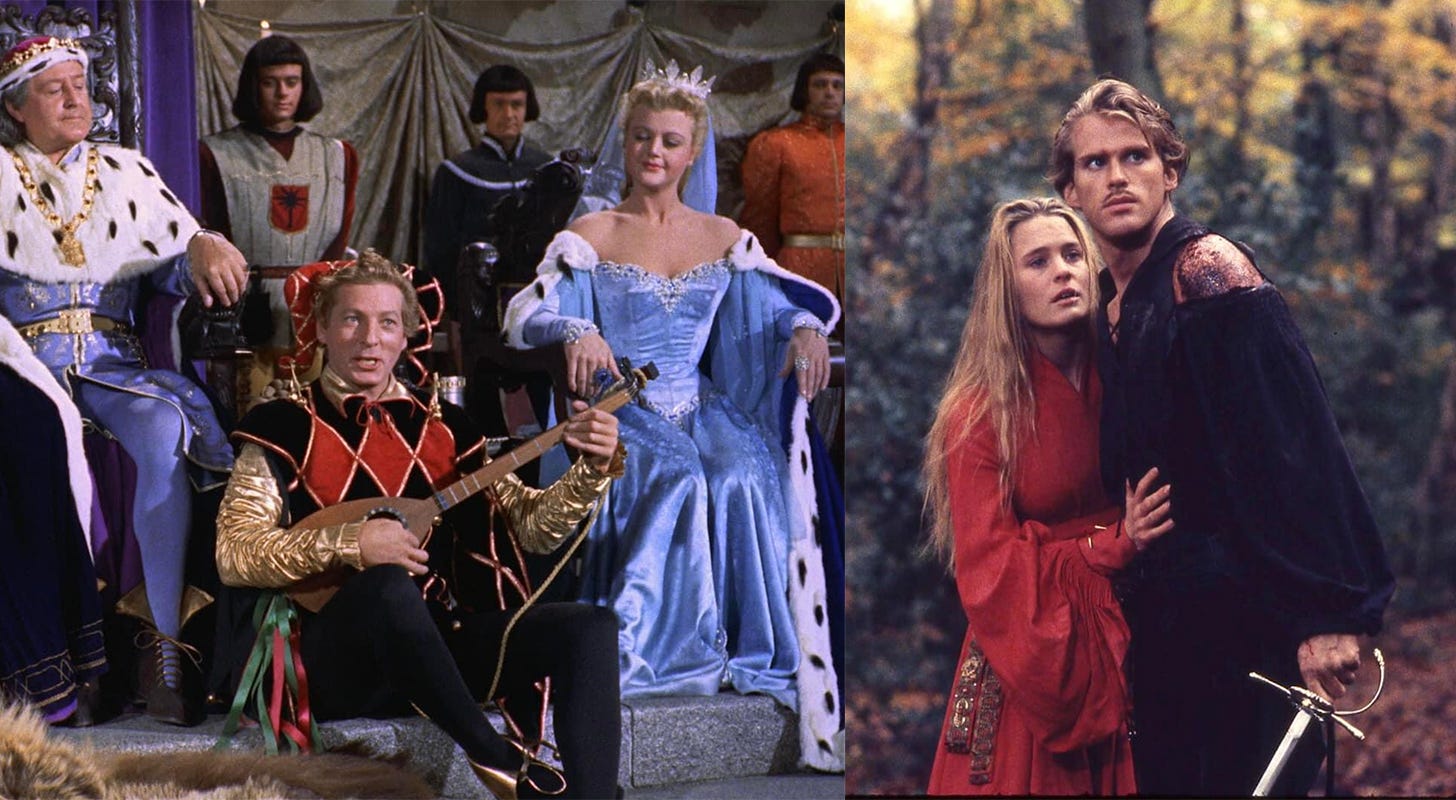
The last time I read about Victorian color choices, the author made the point that the new aniline dyes meant everyone went bonkers for strong colors that came from them, and then a decade or so later, things got less vibrant in counter-reaction.
I'm wondering if Technicolor did the same for film -- initially everyone was very excited about saturated colors (Court Jester, etc, as you mention) and then the film fashion reacted against that "old-fashioned" saturation with grunge, and it hasn't swung back yet.